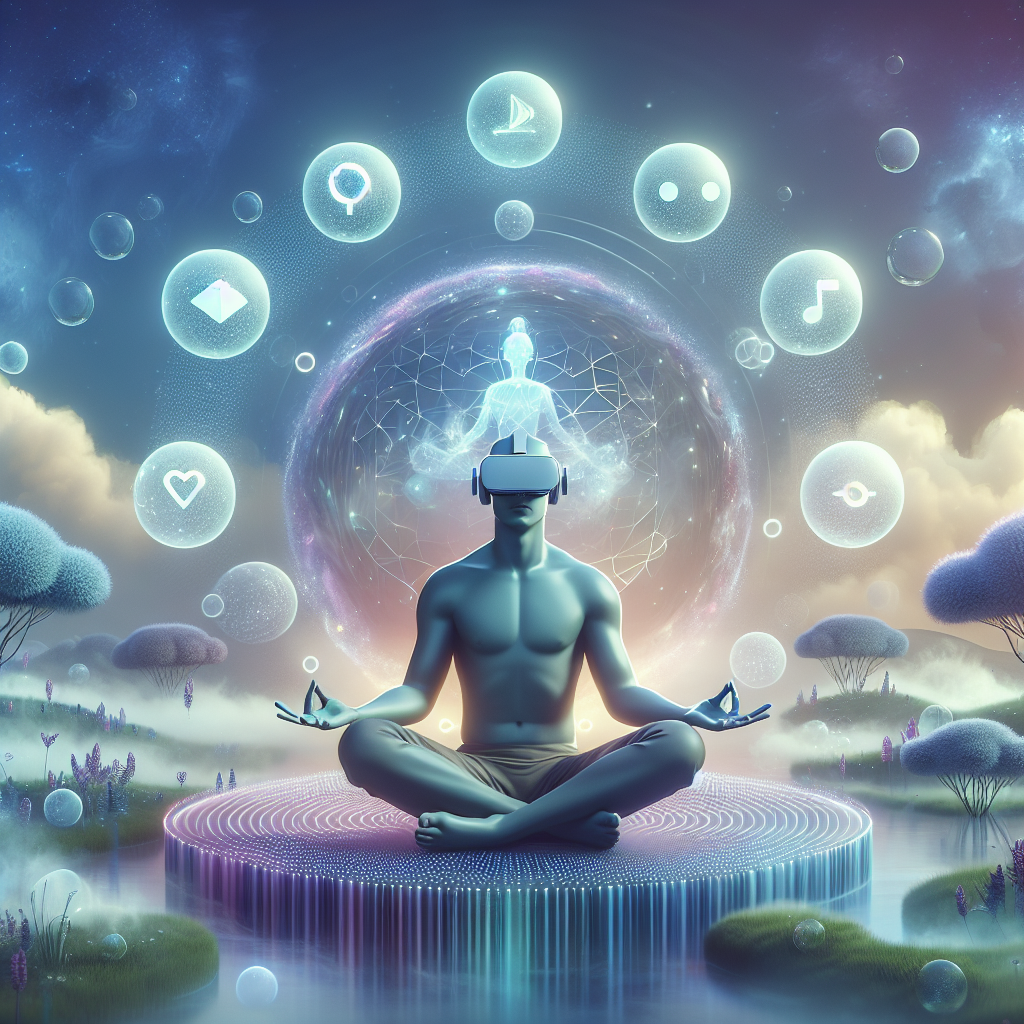How to Use Relaxation Technology for Guided Imagery Practices
In today’s fast-paced world, everyone seems to be seeking ways to unwind and ease the mind. Guided imagery practices, enhanced by relaxation technology, offer a unique avenue to achieve mental tranquility. Whether you’re a seasoned meditator or a curious beginner, understanding how to effectively use these tools can significantly enhance your practice. Let’s explore how relaxation technology can revolutionize your guided imagery sessions.
What is Guided Imagery?
Guided imagery is a powerful meditative technique that involves visualizing serene images or scenarios to promote relaxation and reduce stress. By engaging the imagination, it helps in calming the mind, reducing anxiety, and even improving physical health. Picture yourself on a quiet beach, feeling the gentle breeze and listening to the rhythmic waves—this is the essence of guided imagery.
The Role of Relaxation Technology
Relaxation technology encompasses a range of digital tools designed to enhance the meditative experience. From mobile apps to VR headsets, these innovations provide immersive experiences that can deepen your imagery practices. Let’s delve into some popular relaxation technologies and their benefits.
Top Relaxation Technologies for Guided Imagery
1. Mobile Apps ?
Mobile apps like Calm, Headspace, and Insight Timer have transformed the way we practice guided imagery. These apps offer a plethora of guided sessions, each tailored to different needs, such as stress relief, better sleep, or improved focus. With user-friendly interfaces and a variety of voice guides, these apps make it easy to incorporate guided imagery into your daily routine.
2. Virtual Reality (VR) ?
Virtual Reality takes guided imagery to the next level by providing a fully immersive experience. Imagine putting on a VR headset and being transported to a tranquil forest or a peaceful mountain top. VR technology engages multiple senses, making the imagery more vivid and impactful, thereby enhancing relaxation and mental well-being.
3. Biofeedback Devices ?
Biofeedback devices, such as the Muse headband, provide real-time feedback on your physiological responses during meditation. By monitoring brain waves, heart rate, and muscle tension, these devices help you understand how your body reacts to guided imagery, allowing you to refine your practice for better results.
Steps to Integrate Relaxation Technology into Your Practice
Step 1: Choose the Right Technology
Begin by selecting a technology that aligns with your goals and preferences. If you’re new to guided imagery, start with a simple app. For those seeking a deeper experience, consider investing in a VR headset or biofeedback device.
Step 2: Set Up a Relaxing Environment
Create a calm and comfortable space where you can practice guided imagery undisturbed. Dim the lights, use aromatic candles, or play soft music to enhance the ambiance.
Step 3: Start with Short Sessions
If you’re new to guided imagery, start with short sessions of 5-10 minutes. Gradually increase the duration as you become more comfortable with the practice.
Step 4: Be Consistent
Consistency is key to reaping the full benefits of guided imagery. Aim to practice daily, even if it’s just for a few minutes. Regular practice enhances the effectiveness of relaxation technology.
Benefits of Using Relaxation Technology for Guided Imagery
By integrating relaxation technology into your guided imagery practices, you can experience numerous benefits:
- Enhanced Focus: Technology helps in maintaining focus by reducing distractions, making it easier to immerse in the imagery.
- Deeper Relaxation: The immersive nature of technologies like VR can lead to profound relaxation, reducing stress and anxiety.
- Improved Sleep: Many users report better sleep quality after using relaxation apps or devices before bedtime.
- Increased Self-Awareness: Biofeedback devices provide insights into your body’s responses, fostering greater self-awareness and mindfulness.
Conclusion
Incorporating relaxation technology into your guided imagery practices can significantly enhance the experience and deepen your relaxation. Whether you prefer the simplicity of mobile apps or the immersive nature of VR, there’s a technology out there to suit your needs. By consistently using these tools, you’ll find yourself more relaxed, focused, and in tune with your inner self. So why wait? Begin your journey to a more peaceful mind today!
FAQs
Q: Can I use relaxation technology if I’m new to meditation?
A: Absolutely! Relaxation technology is designed to accommodate both beginners and seasoned practitioners. Start with simple tools like mobile apps to get comfortable with guided imagery.
Q: Are there any side effects to using VR for guided imagery?
A: While VR is generally safe, some users may experience motion sickness or eye strain. It’s important to take breaks and listen to your body’s signals.
Q: How often should I practice guided imagery with technology?
A: Aim for daily practice, even if it’s brief. Consistency enhances the benefits and makes the practice more effective over time.
Embrace the future of meditation with relaxation technology and unlock the full potential of guided imagery practices. ?
Roshiwave Meditation Mind Machine
Add CTA sections description.


